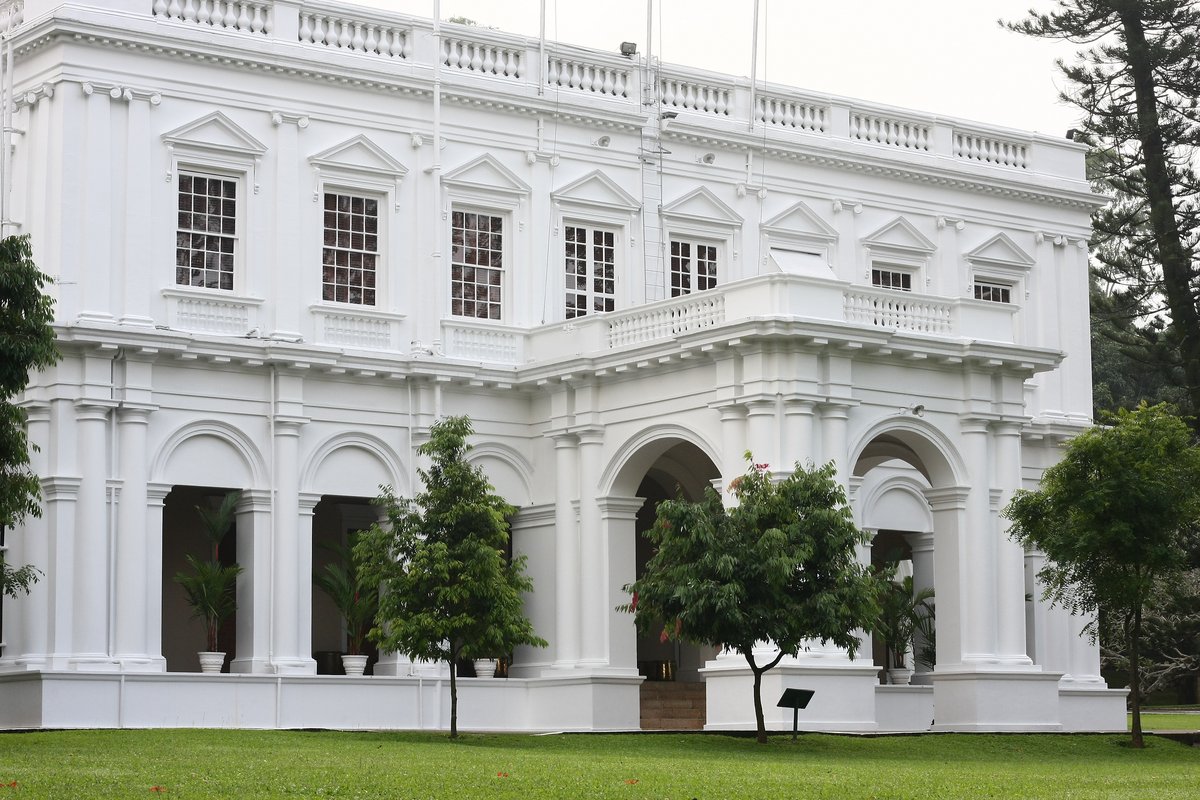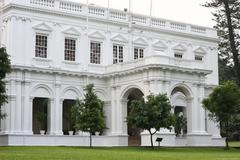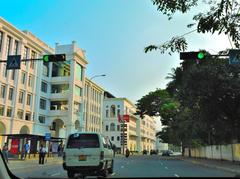
Visiting Colombo Lighthouse in Wattala, Sri Lanka: Tickets, Hours, and Tips
Date: 24/07/2024
Introduction
Colombo, the bustling capital of Sri Lanka, is a treasure trove of historical landmarks, with its lighthouses standing out as significant maritime beacons. These structures have been pivotal in guiding ships safely into the harbor and are deeply intertwined with the city’s rich colonial history. The Colombo Lighthouse, located in Wattala, is a prominent example of such historical significance. Originally constructed by the British in 1820 and later rebuilt in 1952, this lighthouse is not only a navigational aid but also a symbol of Colombo’s strategic importance in global maritime trade (AmazingLanka) (Discover Colombo).
Visiting the Colombo Lighthouse offers an opportunity to delve into the architectural beauty and cultural heritage of the city. The lighthouse stands as a testament to the advancements in lighthouse technology and design over the centuries. Visitors are treated to panoramic views of the Indian Ocean and the Colombo skyline, making it a popular spot for both locals and tourists. This guide aims to provide comprehensive information on the lighthouse’s history, visitor details, travel tips, and nearby attractions, ensuring a memorable and enriching experience for all who explore this iconic landmark.
Table of Contents
- Introduction
- Historical Background
- Visitor Information
- Architectural and Operational Details
- Travel Tips
- Nearby Attractions
- The Evolution of Colombo’s Lighthouses
- FAQ
- Historical Significance
- Preservation and Legacy
- Conclusion
Historical Background
The First Lighthouse of Colombo
The first lighthouse in Colombo was a significant maritime structure built in 1826. This lighthouse was constructed on the flagstaff bastion of the Colombo Fort, a strategic location almost 120 yards (110 meters) away from the sea and 12 yards (10.9 meters) above sea level. The lighthouse itself was a wooden structure surrounding a two-story-high brick building. The light tower was added in 1829, and it underwent repairs in 1844 and was painted and colored in 1849 (AmazingLanka).
The lighthouse was equipped with copper parabolic reflectors and used argand lamps, which were lit using locally sourced coconut oil. The focal distance of the reflectors was 3⅜ inches, with a diameter of 21 inches and a depth of 8¾ inches. Eleven lamps in three tiers provided the illumination, and the light could be seen for 16 miles. This lighthouse operated until 1867, when a light was added to the then-new clock tower at the junction of Chatham Street and Janadhipathi Mawatha (formerly Queens Road) in Colombo Fort (AmazingLanka).
The Old Galle Buck Lighthouse
The Old Galle Buck Lighthouse, constructed in 1952, served as Colombo’s guiding light for over 50 years, directing ships safely into the bustling harbor. This lighthouse stands as a testament to Sri Lanka’s rich maritime heritage and offers a glimpse into Colombo’s colonial past. Although it is now retired from its maritime duties, it remains a significant historical landmark (Discover Colombo).
Visitor Information
Visiting Hours and Tickets
The Old Galle Buck Lighthouse is open to visitors from 9 AM to 5 PM daily. Entry is free of charge, making it an accessible attraction for all. However, donations are welcome to aid in the preservation efforts.
Accessibility
The lighthouse is accessible by a short 5-minute drive or a scenic 15-minute walk from Colombo Fort. There are no specific accessibility features for individuals with mobility impairments, so visitors should plan accordingly.
Architectural and Operational Details
The Old Galle Buck Lighthouse is a prominent structure that offers visitors a chance to climb to the top for panoramic views of the city and the Indian Ocean. This lighthouse is conveniently located just a short 5-minute drive or a scenic 15-minute walk from Colombo Fort, making it an easy addition to any city exploration itinerary (Discover Colombo).
Travel Tips
- Best Time to Visit - The best time to visit the lighthouse is during the early morning or late afternoon to avoid the midday heat.
- Transportation - Public transportation, such as buses and tuk-tuks, are readily available. Alternatively, visitors can hire a taxi or use ride-sharing services.
- What to Bring - Comfortable walking shoes, water, and a hat are recommended for the visit.
Nearby Attractions
While visiting the Old Galle Buck Lighthouse, consider exploring other nearby attractions such as:
- Colombo Fort - A historical area with colonial-era buildings and the bustling Pettah Market.
- Galle Face Green - A popular ocean-side urban park offering stunning sunsets and local street food.
- Colombo National Museum - A treasure trove of Sri Lanka’s history and culture.
The Evolution of Colombo’s Lighthouses
The evolution of lighthouses in Colombo reflects the city’s growth and development as a major maritime hub. The first lighthouse, built in the early 19th century, marked the beginning of Colombo’s efforts to ensure safe navigation for ships entering its harbor. The Old Galle Buck Lighthouse, built over a century later, continued this tradition, serving as a vital navigational aid for over five decades.
The transition from the first lighthouse to the Old Galle Buck Lighthouse highlights the advancements in lighthouse technology and design. The use of copper parabolic reflectors and argand lamps in the first lighthouse was a significant technological achievement at the time. By the mid-20th century, the construction of the Old Galle Buck Lighthouse incorporated more modern materials and design principles, reflecting the progress in engineering and maritime safety (AmazingLanka).
FAQ
What are the visiting hours for Old Galle Buck Lighthouse?
The lighthouse is open from 9 AM to 5 PM daily.
How to get tickets for Old Galle Buck Lighthouse?
Entry is free of charge, but donations are welcome to support preservation efforts.
Is the lighthouse accessible for individuals with mobility impairments?
There are no specific accessibility features, so visitors with mobility impairments should plan accordingly.
Historical Significance
The historical significance of Colombo’s lighthouses extends beyond their functional roles as navigational aids. These structures are emblematic of Colombo’s colonial history and its strategic importance as a port city. The first lighthouse, built during the British colonial period, symbolizes the efforts to modernize and secure Colombo’s harbor. The Old Galle Buck Lighthouse, constructed in the post-independence era, represents a continuation of this legacy, serving as a beacon of safety and progress for the newly independent nation.
Preservation and Legacy
Today, the Old Galle Buck Lighthouse stands as a preserved historical monument, offering visitors a unique opportunity to connect with Colombo’s maritime heritage. The lighthouse’s preservation efforts ensure that future generations can appreciate its historical and architectural significance. Visitors can explore the lighthouse, learn about its history, and enjoy the breathtaking views it offers, making it a must-visit destination for history enthusiasts and tourists alike (Discover Colombo).
Conclusion
The historical background of Colombo’s lighthouses provides a fascinating insight into the city’s maritime heritage and its evolution as a major port. From the first lighthouse built in the early 19th century to the Old Galle Buck Lighthouse constructed in the mid-20th century, these structures have played a crucial role in ensuring the safety of ships navigating Colombo’s harbor. Today, they stand as preserved historical monuments, offering visitors a unique glimpse into Colombo’s rich colonial past and its journey towards modernization and independence. Remember to check out our mobile app for more travel tips and follow us on social media for updates on Colombo’s historical sites.
References
- AmazingLanka. (n.d.). The First Lighthouse of Colombo. Retrieved from AmazingLanka
- Discover Colombo. (n.d.). Old Galle Buck Lighthouse, Colombo: A Timeless Keepsake. Retrieved from Discover Colombo
- Travelsetu. (n.d.). Colombo Lighthouse Tourism. Retrieved from Travelsetu

